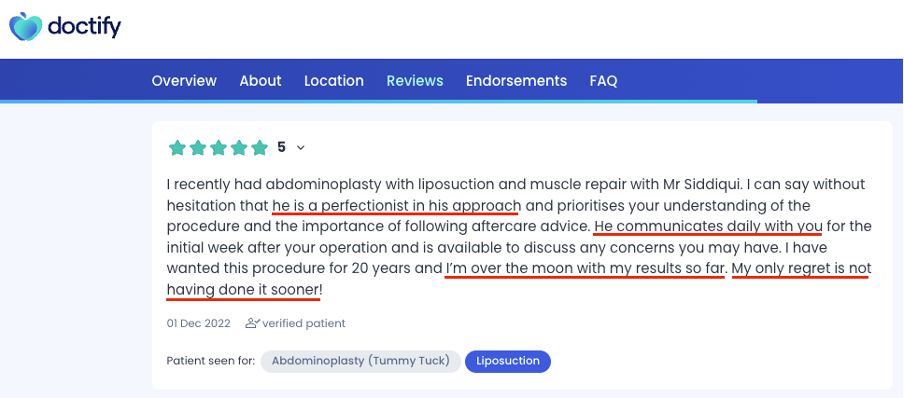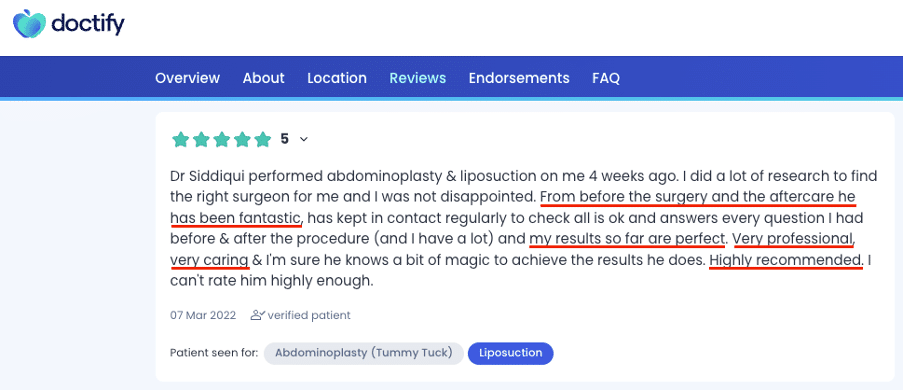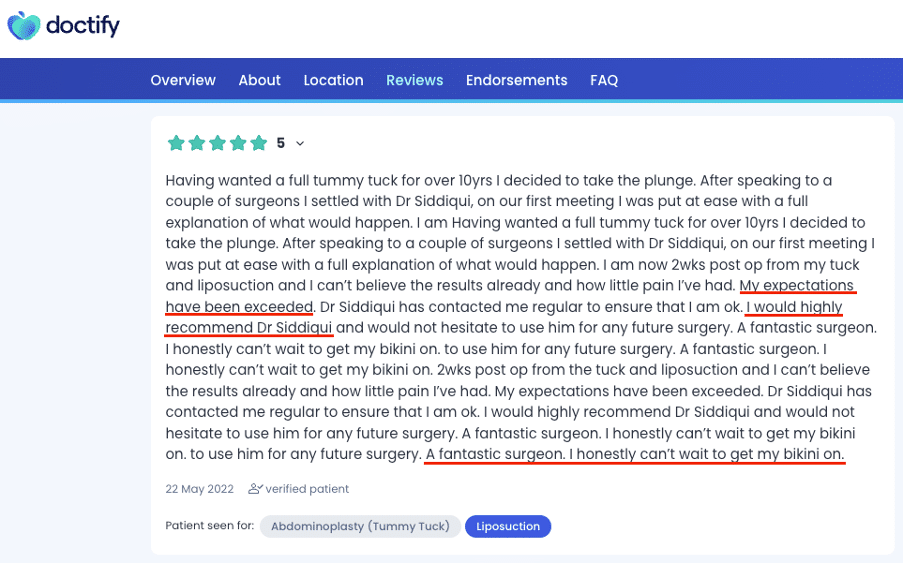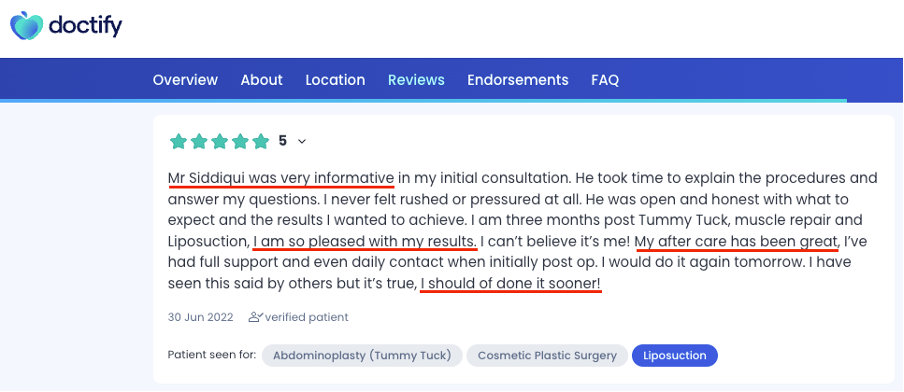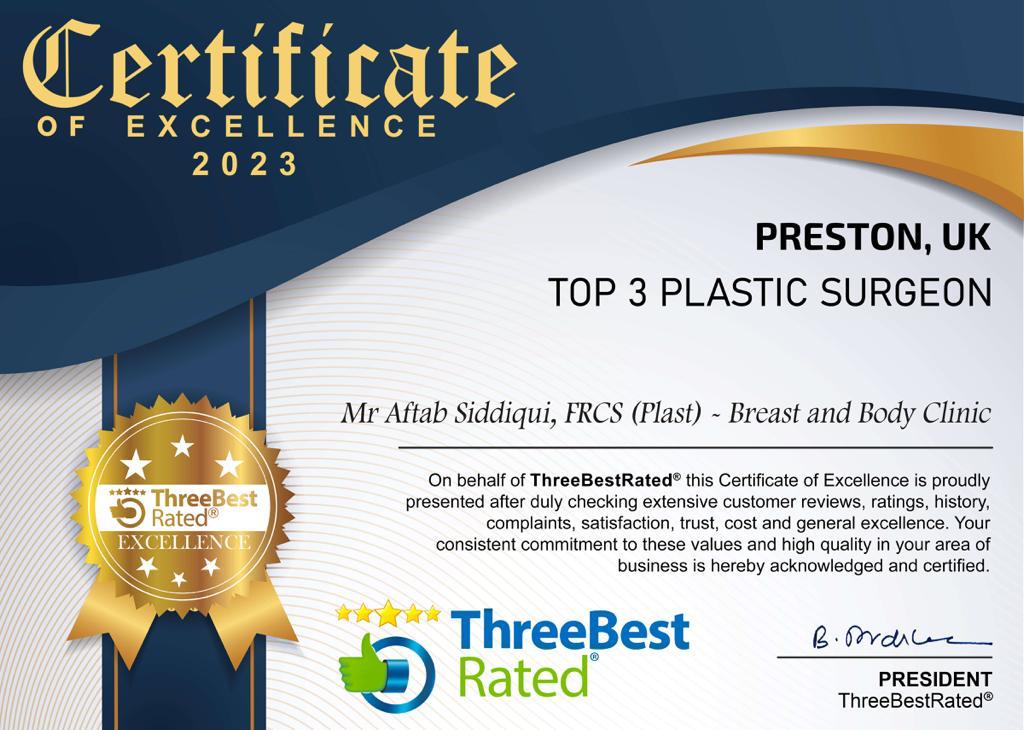One of the top 10 Plastic Surgeons in Manchester
Over 9000 procedures performed
First Prize for Best Clinical Design at National Research Collaborative Meeting, London.
Over 22 Years experience in plastic surgery and cosmetic surgery practice in Northwest.

Awarded Certificate of Excellence 2022 by iWantGreatCare

5-Star Verified Doctor on RealSelf with 174 Reviews
Many individuals feel perfectly content with their natural breast size, while others may wish to enhance their shape for personal or aesthetic reasons. For some, it’s about restoring volume lost after pregnancy or weight changes. For others, it’s about achieving better body balance or feeling more confident in their figure.
If you’re considering treatment for small breasts, Breast & Body Clinic UK offers personalised options to help you achieve a fuller, more balanced look. Depending on your anatomy and goals, our surgeons will recommend treatments tailored to your body, lifestyle and personal goals.
What Is Considered a Small Breast Size?
Breast size is shaped by a complex mix of genetics, hormones, age and body composition. There’s no single definition of the “right” or “ideal” size; what matters most is how you feel in your own skin. Some individuals may feel their breasts are small in proportion to the rest of their body, especially if volume, projection, or cleavage is minimal.
If you wear an A or AA cup, feel flat-chested in certain clothing, or feel your breasts didn’t fully develop during puberty, you may fall into what is typically referred to as a smaller breast category. Volume may also reduce later in life, particularly after pregnancy, breastfeeding, significant weight loss, or the natural ageing process.
What Causes Small Breasts?
Genetics and Natural Development
For most individuals, breast size is largely inherited. If those in your family typically have smaller breasts, you’ll likely develop a similar shape. During puberty, the body goes through hormonal changes that stimulate breast growth, but the extent of that growth can vary significantly based on your genetic makeup.
Some individuals experience underdevelopment of breast tissue during puberty, a condition known as micromastia. While not harmful, it may result in noticeably smaller or asymmetrical breasts, which can sometimes affect self-image or confidence.
Hormonal Fluctuations
Hormones, especially oestrogen and progesterone, play a key role in breast development and volume. Low oestrogen levels during puberty or adulthood may impact the growth of breast tissue. Similarly, fluctuations due to hormonal birth control, menopause, or certain medical conditions can lead to reduced fullness or firmness over time.
Those with hormonal imbalances caused by conditions such as polycystic ovary syndrome (PCOS) or thyroid disorders may also experience changes in breast size and density.
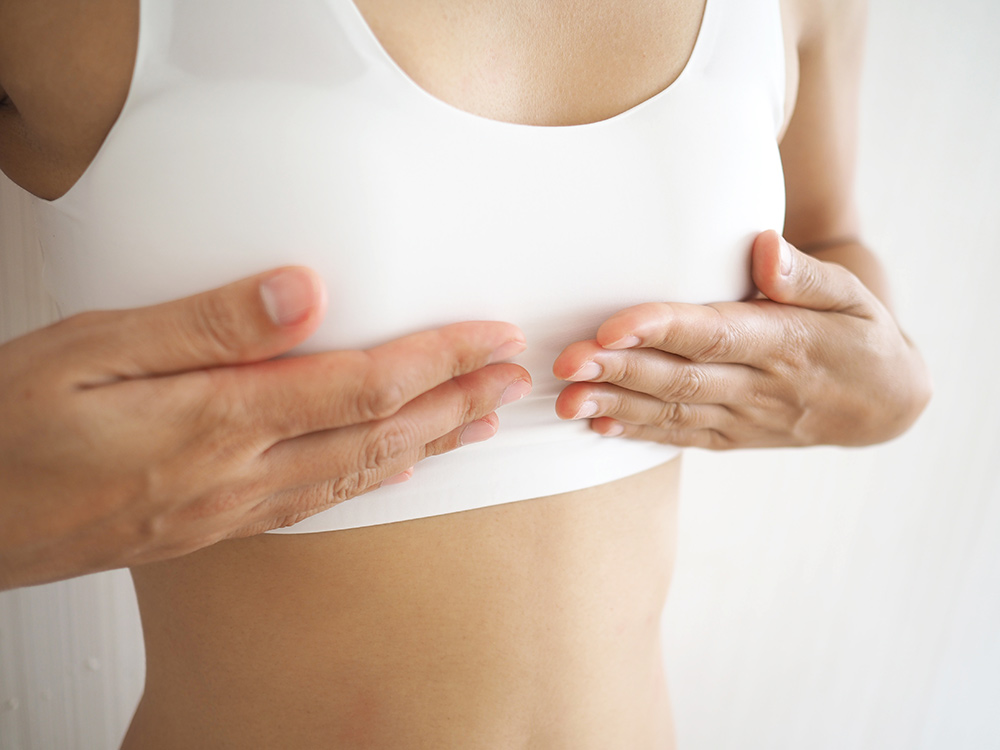
Body Composition and Weight Loss
Breasts are made up of glandular tissue and fat. If you have a naturally lean body type or engage in high levels of physical activity, your overall body fat percentage may be lower, which often results in smaller breasts. Even moderate changes in weight can influence breast volume, particularly if your body stores fat unevenly.
Individuals who lose a significant amount of weight may notice their breasts becoming smaller or flatter, sometimes with excess skin. This can be particularly noticeable in the upper pole of the breast, where volume loss creates a deflated appearance.
Ageing and Life Changes
As you age, your breast tissue may naturally lose volume and elasticity. Collagen and fat content decrease over time, which can contribute to smaller or more sagging breasts. Pregnancy and breastfeeding also have an impact. Many individuals experience increased breast size during pregnancy, followed by shrinkage or deflation after breastfeeding ends.
In some cases, these changes can lead to a loss of shape or projection, even if you previously had fuller breasts. While this is a normal part of ageing and motherhood, it can feel like a significant shift in your body image.
Medical Conditions and Rare Causes
Although rare, some medical conditions can cause smaller or underdeveloped breasts. Poland Syndrome, for instance, is a congenital condition that affects the development of chest muscles and breast tissue, usually on one side. Other developmental anomalies can also lead to asymmetry or reduced growth.
Should I Consider Treatment for Small Breasts?
Choosing to undergo a cosmetic procedure is deeply personal. There’s absolutely nothing wrong with having small breasts, and many embrace their figure exactly as it is. But if your breast size leaves you feeling out of balance, uncomfortable in your clothes, or lacking confidence, it’s perfectly valid to seek change.
At Breast & Body Clinic UK, we offer a respectful, supportive environment where you can openly discuss your concerns. Our goal is to help you explore your options without pressure, so you can make the choice that feels right for you.
Treatment Options for Small Breasts
At Breast & Body Clinic UK, we offer a range of advanced procedures to enhance breast shape and size. Whether you’re looking for subtle fullness or a more noticeable change, we’ll recommend an approach tailored to your anatomy, lifestyle and goals.
Breast Augmentation
Breast augmentation with implants is one of the most established and widely chosen options for enhancing breast volume. Implants can add fullness, improve cleavage and bring better balance to your overall silhouette.
With a variety of shapes (such as round or teardrop), materials (silicone or saline) and sizes available, your surgeon will help you select the option that best complements your body and aesthetic goals.
Hybrid Breast Augmentation
This method combines a small implant with your own fat, transferred from areas like the abdomen or thighs. This approach offers a softer, more natural enhancement, ideal for those seeking subtle volume without an overly augmented look. Hybrid augmentation also improves contouring in both the breasts and donor areas.
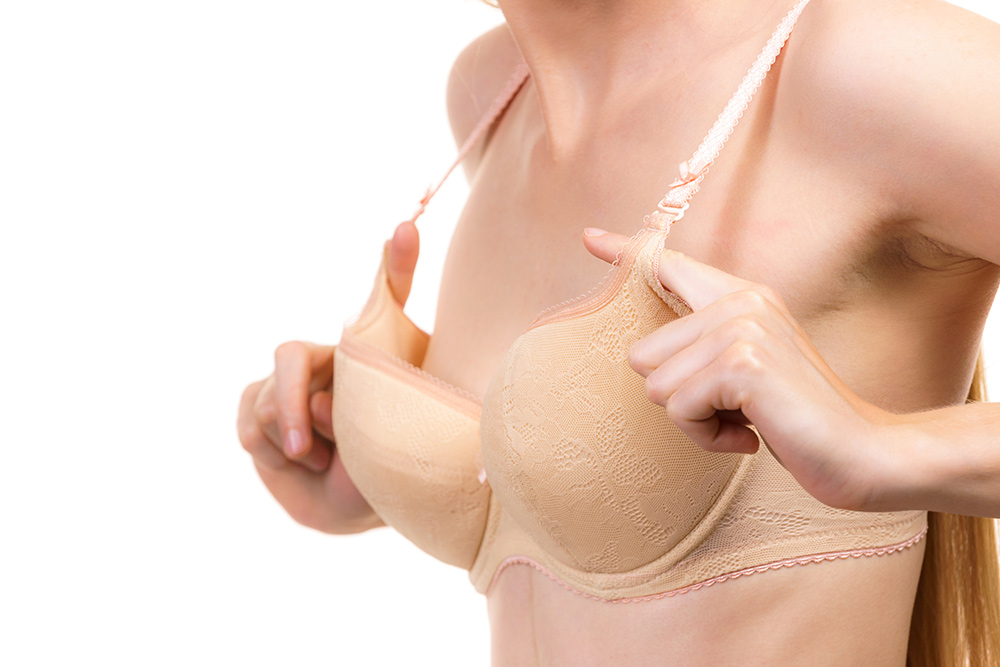
Breast Mastopexy (Breast Lift)
If you have smaller breasts with noticeable sagging or downward-facing nipples, a breast lift, also known as a mastopexy, may be the most suitable option.
This procedure reshapes and elevates the breast tissue to restore a more youthful and uplifted appearance. Depending on your desired outcome, a breast lift can be performed on its own or combined with implants or fat transfer for added volume and contour.
Mummy Makeover
A mummy makeover is also available for those looking to restore their figure after childbirth. These typically combine breast enhancement (augmentation or lift) with body contouring procedures such as a tummy tuck or liposuction, helping to address post-pregnancy changes holistically.
Wondering if Breast Procedure Surgery is Right For You?
Find Out Today
Why Choose Breast & Body Clinic UK
for Your Breast Procedure?
At Breast & Body Clinic UK, we combine surgical expertise with a personalised, patient-centred approach. Our team of highly trained surgeons in Manchester are dedicated to delivering natural-looking results. With over 19 years of experience and 9,000+ cosmetic procedures performed, our Manchester clinic is a trusted destination for individuals considering breast surgery.
We encourage you to book a free consultation with our expert surgeons. During your consultation, we’ll assess your concerns, discuss your goals and provide a tailored recommendation.

Meet Mr Siddiqui
MBBS (Hons), MRCS Ed, M.Ch, FRCS (Plastic Surgery) Consultant Plastic and Cosmetic Surgeon CHESTER | MANCHESTER
Mr Siddiqui holds the position of Consultant Plastic Surgeon at The Countess of Chester Hospital, where he is a valuable member of the Plastic and Reconstructive Surgery Department. He is widely recognised as one of Manchester’s foremost cosmetic surgeons, consistently ranking among the top 10 in his field.
Having completed comprehensive training in plastic surgery, he later took on the role of an NHS Consultant and has since expanded his expertise to create a private practice serving the communities of Manchester, Chester, and Preston.
How to book your initial consultation
- Fill out our online booking form
- Call us: 07787 331122
- Email us: info@breastandbody.co.uk
Wondering if Breast Procedure Surgery is Right For You?
Find Out Today
FAQs
What is the treatment for small breasts?
Small breasts can be safely and effectively enhanced through several surgical options. The most common treatments include breast augmentation with implants, hybrid augmentation (which combines implants with fat transfer) and breast uplift surgery if sagging is also a concern. The right approach depends on your anatomy, aesthetic goals and lifestyle preferences.
How can I increase my small breast size?
The most reliable way to increase breast size is through cosmetic surgery, such as breast implants or fat transfer. These procedures offer long-lasting, natural-looking results tailored to your desired shape and size. While creams, supplements and exercises are often marketed as breast enhancers, they typically offer no proven or permanent results.
At what age do breasts stop growing?
Breasts typically complete their natural development by the late teens or early twenties. However, breast size and shape can continue to change throughout life due to hormonal shifts during pregnancy, menopause, or weight fluctuations. It’s also not uncommon for individuals to lose breast volume over time, especially after breastfeeding or significant weight loss.
What is the ideal breast size?
There’s no universally “ideal” breast size. The ideal size is one that feels balanced with your body proportions and makes you feel confident in your own skin.
Can small breasts affect body image or confidence?
For some, small breasts are simply part of their natural shape and don’t cause any concerns. But for others, feeling flat-chested or lacking volume can impact clothing choices, confidence and even intimacy.
Ask Us a Question
Any questions or looking for a consultation? Simply fill in the form below and
we will get back to you promptly with a reply. We are always here for you!

